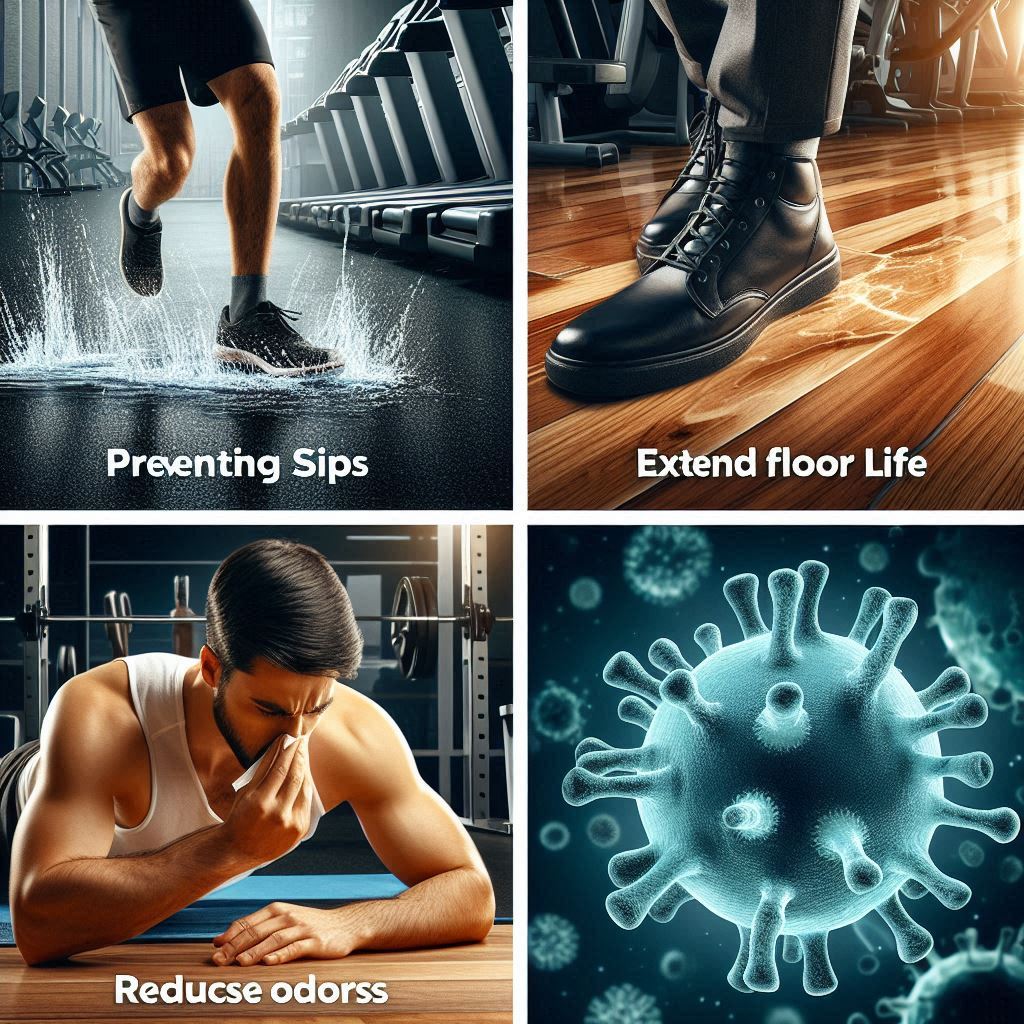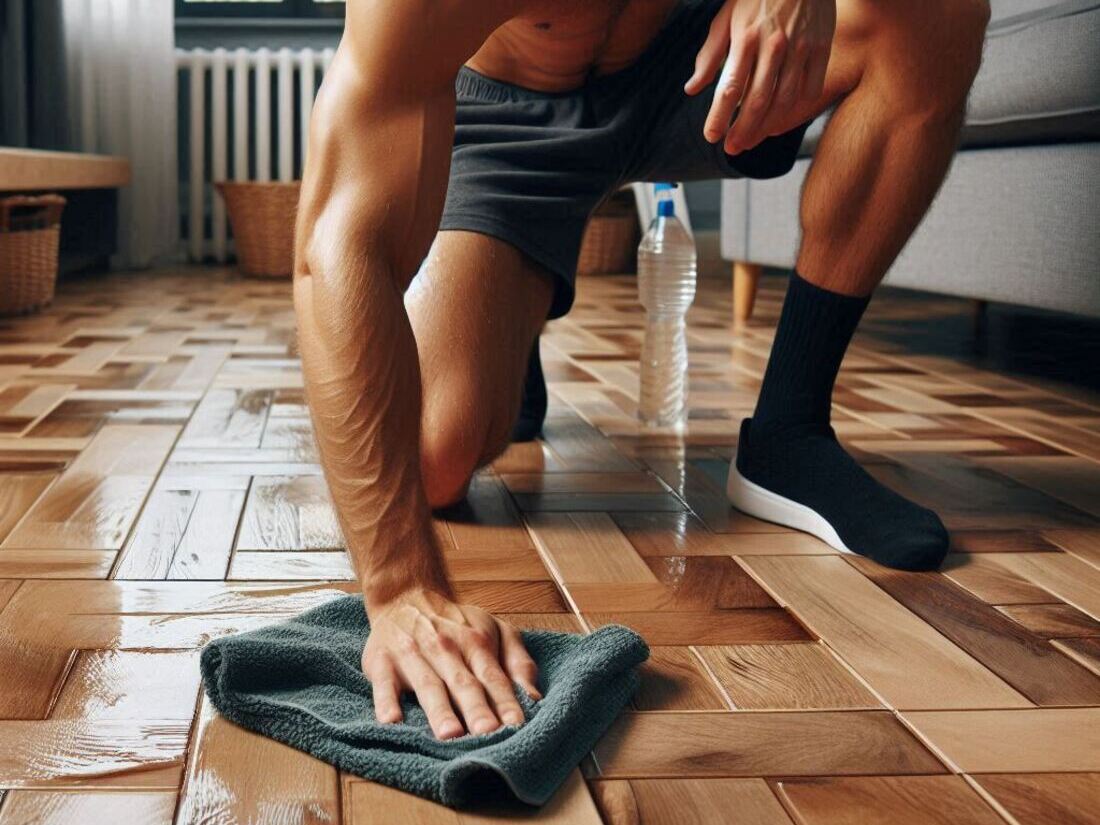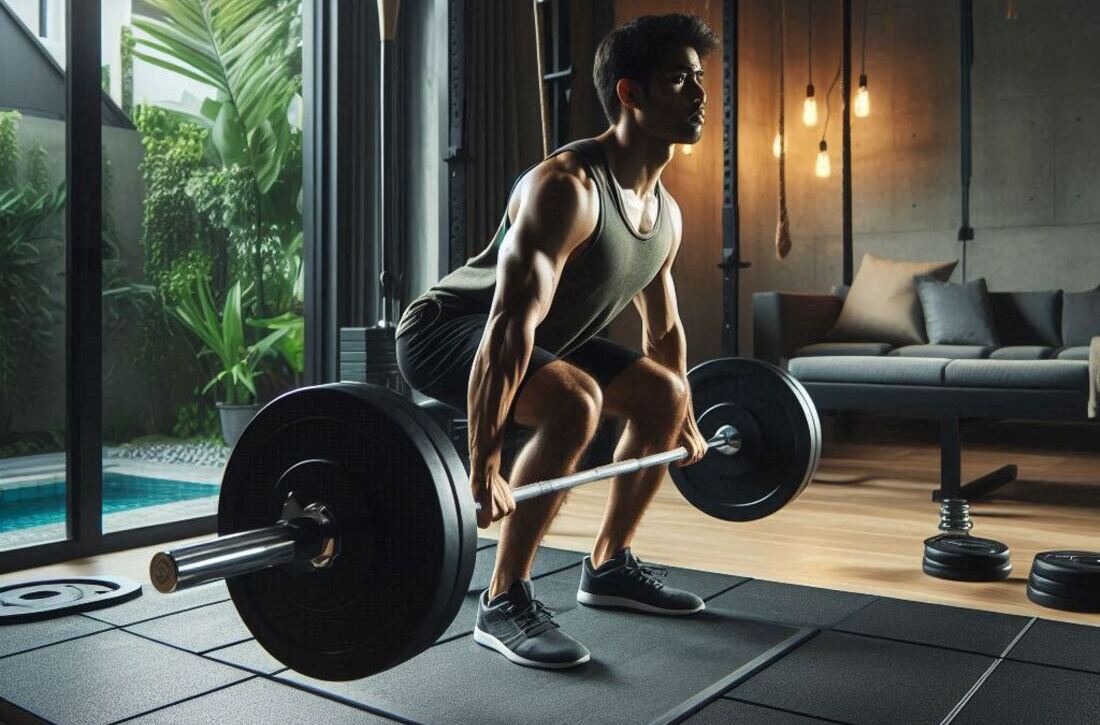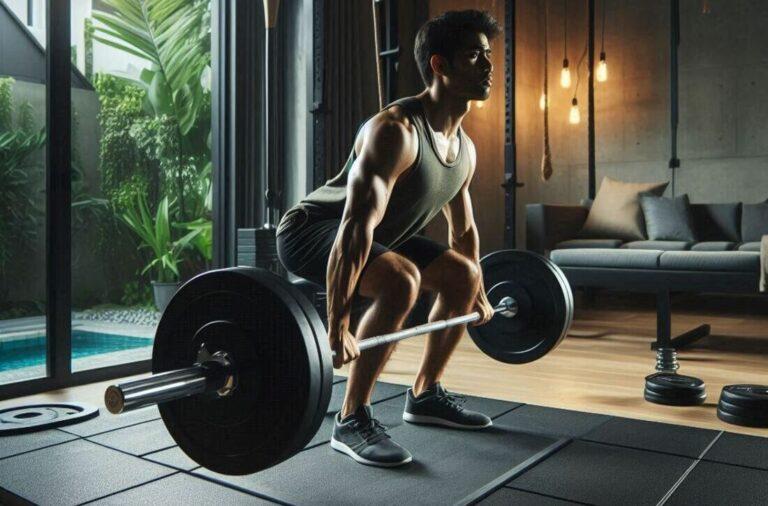Let’s face it, intense workouts lead to sweat.
And while that sweat signifies hard work and progress, it can also leave your home gym floor looking like a battleground.
Maintaining a clean and hygienic home gym environment doesn’t require a herculean effort.

This guide equips you with easy cleaning and maintenance tips for various home gym flooring options.
From the popular rubber mats to the more creative painted concrete, we’ll explore cleaning techniques, recommended products, and valuable strategies to keep your gym floor looking fresh and functional for years to come.
Why Prioritize Cleaning and Maintaining Your Home Gym Floor?
Maintaining a clean home gym floor goes beyond aesthetics.
Here are some key reasons to prioritize regular cleaning and maintenance:
- Prevents Injuries: Sweat, dirt, and dust can create a slippery surface, increasing the risk of slips and falls. Regular cleaning minimizes these risks and ensures a safe workout environment.
- Extends Floor Lifespan: Proper cleaning removes dirt and debris that can break down floor materials over time. Regular maintenance helps your flooring last longer, saving you money on replacements.
- Reduces Odors: Sweat and bacteria can lead to unpleasant odors in your gym. Proper cleaning techniques combat these odors, creating a more pleasant workout space.
- Improves Overall Hygiene: Maintaining a clean floor minimizes the spread of bacteria and germs, promoting a healthy workout environment.

Key Takeaways on Why Cleaning and Maintaining Your Home Gym Floor Matters:
- Reduces risk of slips and falls for a safer workout environment.
- Extends the lifespan of your flooring, saving money on replacements.
- Combats unpleasant odors for a more enjoyable workout experience.
- Promotes good hygiene by minimizing the spread of germs and bacteria.
Now that you understand the importance of cleaning, let’s delve into specific strategies for different flooring options:
Cleaning and Maintenance by Home Gym Flooring Type

1. Rubber Floor Mats
- Regular Cleaning: Sweep or vacuum loose dirt and debris daily. Mop with a solution of warm water and a mild dish soap or a floor cleaner specifically designed for rubber floors. Avoid harsh chemicals or abrasive cleaners that can damage the mats.
- Deep Cleaning: For tougher dirt or grime, use a diluted vinegar solution (1 part vinegar to 10 parts water). Rinse thoroughly and allow the mats to air dry completely before using the gym again.
2. Foam Floor Tiles
- Regular Cleaning: Wipe down the tiles with a damp microfiber cloth and a mild detergent solution. Avoid excessive moisture, as it can warp the tiles. Allow the tiles to air dry completely.
- Deep Cleaning: For a deeper clean, mix a few drops of tea tree oil or essential oil with water in a spray bottle. Lightly mist the tiles and wipe clean with a damp microfiber cloth. This natural disinfectant tackles bacteria without harsh chemicals.
3. Horse Stall Mats
- Regular Cleaning: Sweep or vacuum the mats to remove dirt and debris. For a more thorough clean, use a stiff bristled broom and a hose with low water pressure. Allow the mats to air dry completely before using the gym again.
- Deep Cleaning: For stubborn dirt or stains, create a solution of warm water and baking soda. Scrub the affected area with the solution and a stiff brush. Rinse thoroughly and allow the mats to air dry completely.
4. Puzzle Exercise Mats
- Regular Cleaning: Wipe down the mats with a damp microfiber cloth and a mild detergent solution. Pay close attention to the interlocking edges, where dirt and sweat can accumulate. Let the mats air dry completely before using the gym again.
- Deep Cleaning: For a deeper clean, some puzzle mats can be disassembled and washed in warm water with a mild detergent. Always refer to the manufacturer’s cleaning instructions before submerging the mats in water. Allow the mats to air dry completely before reassembling them.
5. Painted Concrete
- Regular Cleaning: Sweep or vacuum the floor to remove loose dirt and debris. Mop with a solution of warm water and a pH-neutral floor cleaner. Avoid harsh chemicals or abrasive cleaners that can damage the painted surface.
- Deep Cleaning: For tougher stains, use a diluted vinegar solution (1 part vinegar to 10 parts water). Rinse thoroughly and allow the floor to dry completely.
Table 1: Cleaning and Maintenance Summary by Home Gym Flooring Type
| Flooring Type | Regular Cleaning | Deep Cleaning | Additional Tips |
|---|---|---|---|
| Rubber Floor Mats | Sweep/Vacuum daily, mop with mild soap solution | Diluted vinegar solution (1:10) for tough grime | Avoid harsh chemicals or abrasive cleaners |
| Foam Floor Tiles | Wipe with damp microfiber cloth and mild detergent | Tea tree oil solution for disinfection | Avoid excessive moisture, allow to air dry completely |
| Horse Stall Mats | Sweep/Vacuum, clean with stiff broom and hose | Baking soda solution for stubborn stains | Allow to air dry completely after cleaning |
| Puzzle Exercise Mats | Wipe with damp microfiber cloth and mild detergent | Some mats can be washed with mild detergent (check manufacturer’s instructions) | Pay attention to interlocking edges during cleaning |
| Painted Concrete | Sweep/Vacuum, mop with pH-neutral floor cleaner | Diluted vinegar solution (1:10) for stains | Avoid harsh chemicals or abrasive cleaners |
Prolonging the Life of Your Home Gym Floor: Additional Tips
Beyond regular cleaning, here are some additional strategies to extend the lifespan of your home gym floor:
- Doormats: Place a sturdy doormat at the entrance of your gym to trap dirt and debris before it gets tracked onto the floor.
- Shoe Policy: Consider implementing a “shoe-free” policy in your gym to minimize dirt and sweat transfer from outdoor shoes.
- Lifting Platforms: Use lifting platforms or stall mats under heavy weights to protect the flooring from scratches and dents.
- Sun Protection: Minimize direct sunlight exposure on your flooring, as this can cause fading or warping over time. Consider window treatments like blinds or curtains.
- Regular Inspections: Periodically inspect your flooring for signs of wear and tear, such as cracks, tears, or lifting edges. Address any issues promptly to prevent further damage.
FAQs: Frequently Asked Questions About Cleaning and Maintaining Home Gym Flooring

How often should I clean my home gym floor?
The frequency of cleaning depends on your workout intensity and how often you use your gym. Aim for daily sweeping or vacuuming and regular mopping (2-3 times a week) for heavily used gyms.
What cleaning products should I avoid using on my home gym floor?
Avoid harsh chemicals, bleach, abrasive cleaners, or ammonia-based products. These can damage the flooring and compromise its integrity.
Can I use essential oils for cleaning my home gym floor?
Yes, some essential oils like tea tree oil offer natural disinfectant properties. However, always dilute them properly with water and test them on a small inconspicuous area before using them on the entire floor.
What should I do if my gym floor has a strong odor?
For persistent odors, identify the source (e.g., spilled protein powder) and clean it thoroughly. Baking soda can help neutralize odors on some flooring types. Consider using natural air fresheners or diffusers with invigorating scents like citrus or peppermint.
Conclusion: Maintaining a Clean and Functional Home Gym Floor
Maintaining a clean and well-maintained home gym floor is an essential part of creating a safe and enjoyable workout environment.
By following these simple cleaning and maintenance tips, you can extend the lifespan of your flooring, promote hygiene, and ensure your home gym remains a source of motivation and progress for years to come.
Bonus Tip: Invest in a designated cleaning caddy for your home gym. Store your cleaning supplies, microfiber cloths, and a small broom readily accessible for quick post-workout cleanups.
Remember, a clean gym is a happy gym (and a healthy gym too)! Now lace up your shoes (or don’t!), grab your water bottle, and get ready to conquer your next workout in a fresh and functional space.


